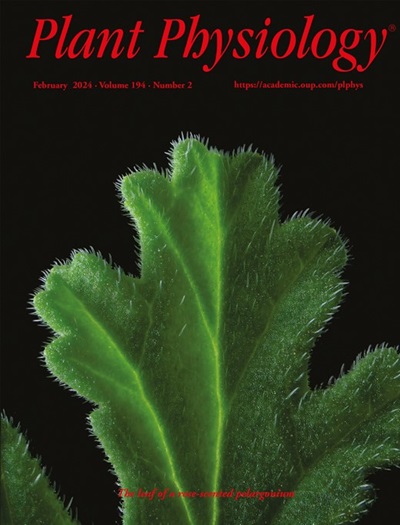Digital PCR enables direct root biomass quantification and species profiling in soil samples.
IF 6.9
1区 生物学
Q1 PLANT SCIENCES
引用次数: 0
Abstract
Roots support plant growth and resilience and are a major route for carbon sequestration. Thus, the study of roots in agricultural and natural systems is essential to develop strategies to mitigate and adjust to climate change. Methods to quantify root biomass in mono- and mixed crop systems are therefore in high demand. A promising approach is to exploit the correlation between root biomass and nuclear DNA. The use of qPCR for the quantitative analysis of root samples has been reported. Here, we show how digital PCR can be used to quantify root DNA from soil samples harboring single species or species mixtures. This molecular method has several advantages over more time-consuming methods, including enhanced sensitivity and absolute quantification of target DNA, increased accuracy and reliability, and the ability to quantify roots directly from soil in different species mixtures. We developed a DNA-based digital droplet PCR (ddPCR) method for root species profiling and biomass quantification directly from soil samples under semi-field conditions. Our findings suggest that implementing this ddPCR method can substantially simplify and improve root quantification of specific species, even in crop mixtures. This method offers a more time- and labor-efficient alternative to traditional techniques (e.g., root separation or C13 labeling). The complement of primer-probe sets presented here can be continuously expanded to include additional plant species, thus broadening the scope of this DNA-based ddPCR method.数字PCR能够在土壤样品中直接进行根生物量定量和物种分析。
根系支持植物生长和恢复力,是固碳的主要途径。因此,研究农业和自然系统的根源对于制定减缓和适应气候变化的战略至关重要。因此,对单一作物和混合作物根系生物量的量化方法的需求很大。利用根生物量和核DNA之间的相关性是一种很有前途的方法。已有报道使用qPCR对根样品进行定量分析。在这里,我们展示了如何使用数字PCR来定量土壤样品中含有单一物种或物种混合物的根DNA。与耗时的方法相比,这种分子方法有几个优点,包括提高灵敏度和目标DNA的绝对定量,提高准确性和可靠性,以及直接从不同物种混合物的土壤中定量根系的能力。我们开发了一种基于dna的数字液滴PCR (ddPCR)方法,直接从半田条件下的土壤样品中进行根系物种分析和生物量定量。我们的研究结果表明,实施这种ddPCR方法可以大大简化和提高特定物种的根定量,甚至在作物混合物中也是如此。该方法比传统技术(如根分离或C13标记)提供了更省时、更省力的替代方法。本文提出的引物探针集可以不断扩展,以包括更多的植物物种,从而扩大了这种基于dna的ddPCR方法的范围。
本文章由计算机程序翻译,如有差异,请以英文原文为准。
求助全文
约1分钟内获得全文
求助全文
来源期刊

Plant Physiology
生物-植物科学
CiteScore
12.20
自引率
5.40%
发文量
535
审稿时长
2.3 months
期刊介绍:
Plant Physiology® is a distinguished and highly respected journal with a rich history dating back to its establishment in 1926. It stands as a leading international publication in the field of plant biology, covering a comprehensive range of topics from the molecular and structural aspects of plant life to systems biology and ecophysiology. Recognized as the most highly cited journal in plant sciences, Plant Physiology® is a testament to its commitment to excellence and the dissemination of groundbreaking research.
As the official publication of the American Society of Plant Biologists, Plant Physiology® upholds rigorous peer-review standards, ensuring that the scientific community receives the highest quality research. The journal releases 12 issues annually, providing a steady stream of new findings and insights to its readership.
 求助内容:
求助内容: 应助结果提醒方式:
应助结果提醒方式:


